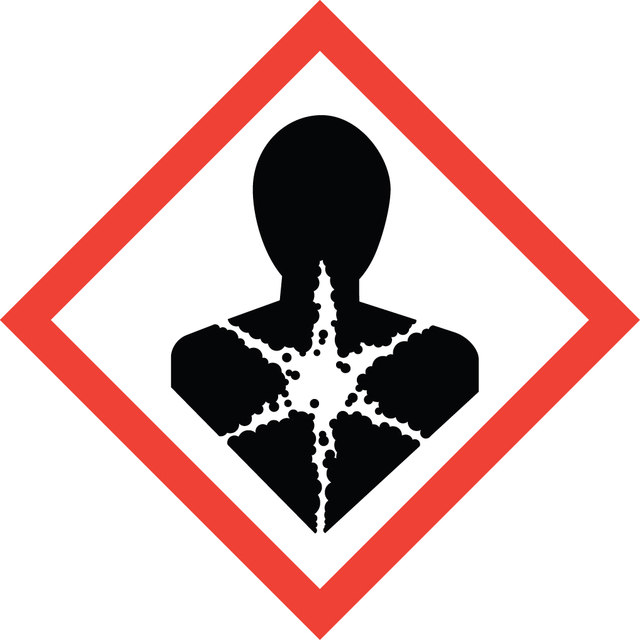Select a Size
About This Item
usage
sufficient for 100 multiwell tests
Quality Level
absorbance ratio
405 nm (Absorbance)
shipped in
wet ice
storage temp.
2-8°C
Gene Information
human ... CHIA(27159), CHIT1(1118)
Related Categories
General description
Application
The kit provides all the reagents required for efficient detection of chitinase activity in fungal and bacterial growth media, macrophage lysates, and purified enzyme preparations. In addition, the kit provides three different substrates for the detection of the various types of the chitinolytic activity:
- 4-Nitrophenyl N,N′-diacetyl-β-D-chitobioside - substrate suitable for exochitinase activity detection (chitobiosidase activity)
- 4-Nitrophenyl N-acetyl-β-D-glucosaminide - substrate suitable for exochitinase activity detection (β-N-acetylglucosaminidase activity)
Biochem/physiol Actions
The chitinolytic enzymes are also categorized based on their enzymatic action on chitin substrates. Endochitinases are defined as the enzymes catalyzing the random cleavage at internal points in the chitin chain. Exochitinases catalyze the progressive release of acetylchitobiose or N-acetylglucosamine from the non-reducing end of chitin, and are referred to as chitobiosidase and β-N-acetylglucosaminidase, respectively.
Chitinases perform different functions in different organisms. In bacteria, they are mainly involved in nutritional processes. In yeast and various fungi, these enzymes participate in morphogenesis. In animals and plants, chitinases primarily play a role in the defense of the organism against pathogen attack.
Analysis Note
Kit Components Only
- Assay Buffer 20 mL
- 4-Nitrophenyl N-acetyl-β-D-glucosaminide 10 mg
- 4-Nitrophenyl N,N′-diacetyl-β-D-chitobioside 5 mg
- 4-Nitrophenyl β-D-N,N′N′′-triacetylchitotriose 1 mg
- Chitinase from Trichoderma viride 1 mg
- p-Nitrophenol Solution, 10 mM 1 mL
- Sodium Carbonate 1 g
Signal Word
Danger
Hazard Statements
Precautionary Statements
Hazard Classifications
Carc. 2 - Eye Irrit. 2 - Resp. Sens. 1 - STOT RE 2 Oral
Target Organs
Liver,Kidney
Storage Class Code
10 - Combustible liquids
Regulatory Information
Choose from one of the most recent versions:
Already Own This Product?
Find documentation for the products that you have recently purchased in the Document Library.
Which document(s) contains shelf-life or expiration date information for a given product?
If available for a given product, the recommended re-test date or the expiration date can be found on the Certificate of Analysis.
How do I get lot-specific information or a Certificate of Analysis?
The lot specific COA document can be found by entering the lot number above under the "Documents" section.
How do I find price and availability?
There are several ways to find pricing and availability for our products. Once you log onto our website, you will find the price and availability displayed on the product detail page. You can contact any of our Customer Sales and Service offices to receive a quote. USA customers: 1-800-325-3010 or view local office numbers.
What is the Department of Transportation shipping information for this product?
Transportation information can be found in Section 14 of the product's (M)SDS.To access the shipping information for this material, use the link on the product detail page for the product.
What has Product CS0980, Chitinase Assay Kit, been tested on?
This kit has been tested on Trichoderma viride, Streptomyces griseus and human macrophages.
What is the recommended substrate concentration for Product CS0980, Chitinase Assay Kit?
A 1mg/mL substrate solution is recommended. If required, the 4-Nitrophenyl-beta-D-N,N',N''-triacetylchitotriose and the 4-Nitrophenyl N,N'-diacetyl-beta-D-chitobioside can be used at lower concentrations in the reaction (0.5 or 0.2mg/mL respectively).
How do you make the substrate in Product CS0980, Chitinase Assay Kit, go into solution?
The substrates do not dissolve easily in the buffer. It may take ~1 hour of shaking to completely dissolve the substrates. Use of a larger container (15 mL) may aid dissolution.
What is the stability of the Product CS0980, Chitinase Assay Kit, substrate solution (s)?
The substrate solution(s) should be stored on ice during the experiment. For storage up to one month, freeze at -20°C or below.
How many reactions will each substrate in Product CS0980, Chitinase Assay Kit, provide?
If used at a concentration of 1mg/mL: * 4-Nitrophenyl N-acetyl-b-D-glucosaminide (Product No. N9376) -100 reactions; * 4-Nitrophenyl N,N’-diacetyl-b-D-chitobioside (Product No. N6133) -50 reactions; * 4-Nitrophenyl-b-D-N,N',N''-triacetylchitotriose (Product No. N8638) -10 reactions.
My question is not addressed here, how can I contact Technical Service for assistance?
Ask a Scientist here.
Related Content
Instructions
Our team of scientists has experience in all areas of research including Life Science, Material Science, Chemical Synthesis, Chromatography, Analytical and many others.
Contact Technical Service